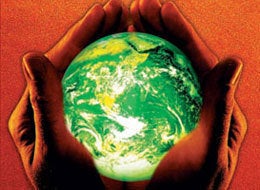
Each day in developing countries more children die unnecessarily from water-related diseases than there are people in my hometown on Long Island, NY. Around 4,000 children per day or 1.5 million per year die from an age-old form of water torture known as diarrhea.
Sometimes I imagine this: the entire population of my high school, the grocery store, the fire department, the library, the bank, and my family all gone. Dead from an illness developed countries have been treating -- or more often preventing -- for the past 100 years by piping water and taking human waste away.
The impact of this gross failure to take action extends far beyond the lives lost. Girls and boys are kept out of school, economies fail to grow, and entire countries are unsuccessful at achieving peace and security.
A recent World Health Organization report, "Safer Water, Better Health" estimates that providing safe water, adequate sanitation and hygiene could save health-care agencies $7 billion a year on health-care costs. Meanwhile 320 million productive working days could be gained and children could go to school an extra 272 million days per year. Overall, there could be a total payback of $84 billion a year from the $11.3 billion annual investment needed to meet international drinking water and sanitation targets. The report concludes that a staggering 10-15% of the global disease burden could be reduced with water and sanitation interventions.
This approach makes sense to Americans, according to a Better World Campaign poll that shows addressing critical issues like clean water is viewed as a key way to help remedy the root causes of many problems facing poor nations.
So what can be done?
One thing that is working -- and that needs to be scaled up, according to UNICEF -- is a program called Community-Led Total Sanitation (CLTS). This program is more about creating behavior change than building infrastructure. It also creates a demand for sanitation, which makes it interesting for those looking at market-based solutions for the global sanitation challenge. Last month while I was visiting Cambodia, I saw first hand the successes of the CLTS program, which is being implemented by the Government of Cambodia and UNICEF. This BBC story reports on the CLTS program in Cambodia.
Village to village I could see the noticeable impact on environmental sanitation between those with the CLTS program and those without -- toilets vs. open defecation; swept compounds vs. garbage-strewn yards; soap and water vs. dirty hands. According to villagers I spoke with, health impacts are already seen in the reduction of diarrheal cases and in the saving of money by families (the average cost to treat severe diarrhea is $20, nearly half the monthly income of many Cambodian families).
The challenge of scaling-up CLTS in Cambodia is largely a financial one. Currently funding exists for only 500 of 13,890 villages. Given the small size of Cambodia, the ability to give the whole country a CLTS program is very realistic. This could be a very interesting case study for donors that want to see impact-driven and efficient water and sanitation programs. Companies like Unilever, PepsiCo, and ITT that have a vested interest in water and sanitation could create a high-profile intervention by pushing through universal access to CLTS in Cambodia. The Bill and Melinda Gates Foundation, Howard G. Buffet Foundation, and the Hilton Foundation could do the same in partnership with the Government of Cambodia. Such a program would most likely prevent the deaths of a majority of the 11,000 children under five that die needlessly from Diarrhea each year in Cambodia.
According to the WHO/UNICEF JMP Report, released on July 17, 2008, worldwide progress is being made. For the first time ever the global population without access to improved drinking water sources has fallen below one billion. Open defecation is declining globally, but the Millennium Development Goal for reducing the numbers of those without access to sanitation is still off track. Concerted, country-wide efforts (such as what could happen in Cambodia) and new interest from donors are needed to help put an end to avoidable water torture.